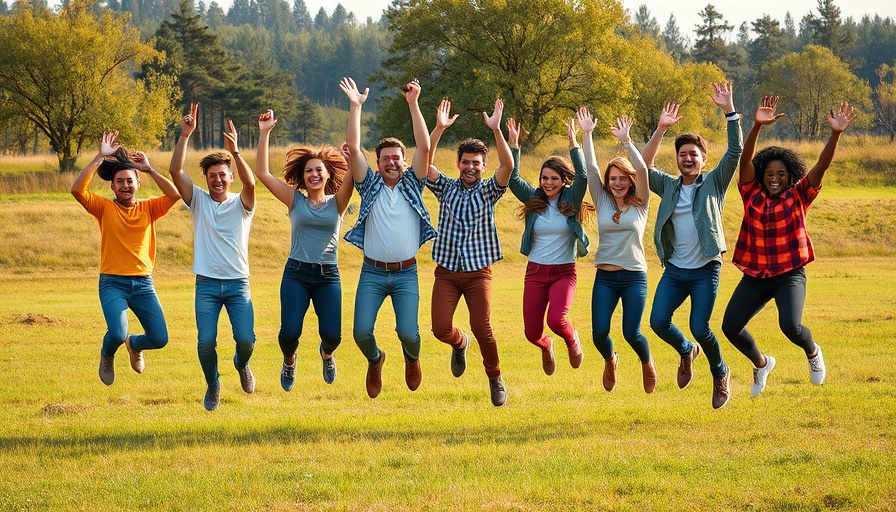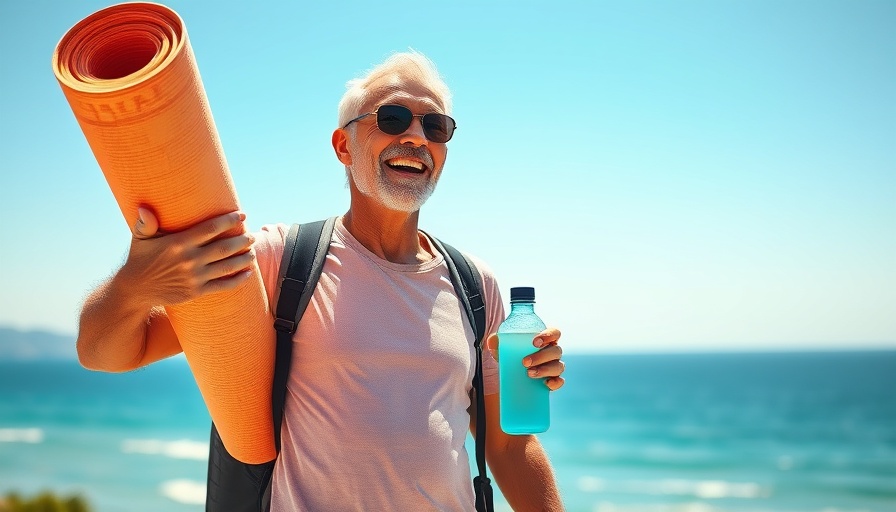
Unlocking the Secret to Healthy Aging: Move More!
As living longer becomes more common, the emphasis on what it means to grow older is shifting profoundly. While the Physical Activity Guidelines for Americans suggests at least 150 minutes of moderate-intensity exercise each week, the conversation is evolving beyond just physical fitness. According to Dr. David J. Marcon, a doctor of chiropractic and advocate for holistic health approaches, the real goal is not merely adding years to life but rather vitality and quality to those years.
Why Quality of Life Matters
Dr. Marcon emphasizes that almost three-fourths of adults reaching 65 will require long-term care at some point in their lives. This statistic resonates with many families grappling with the realities of aging loved ones. The question isn't just how long we can live but how well we can live as we age. He passionately asserts that achieving independence in performing daily activities—like dressing, bathing, and cooking—is a way to enrich our later years.
Redefining Fitness: Beyond Muscle
Common perceptions of fitness often revolve around physique or hitting exercise milestones, but Dr. Marcon challenges this notion. "Fitness should be about your ability to adapt to your environment and live independently," he explains. Standard connections of fitness with strength training or cardio overlook critical elements such as agility, flexibility, and mental well-being. Hence, a more comprehensive view of fitness encompasses every aspect of mobility and daily living.
The Role of Heart Rate Variability
Another fascinating insight provided by Dr. Marcon is the concept of heart rate variability (HRV). He points out that many people mistakenly spend the majority of their time in a high-stress 'fight-or-flight' mode, which can lead to detrimental health effects. Aiming for a higher HRV, driven by regular exercise and stress management techniques, can elevate overall health and longevity. This understanding isn’t just for those already active; it is a gentle invitation for everyone to explore their physical capacities.
The Challenges of Starting an Exercise Routine
For many, the prospect of developing an exercise habit feels overwhelming. Dr. Marcon advises those hesitant about embarking on an active lifestyle to begin small. Citing the statistic that 87% of Americans fail to follow through with New Year’s fitness resolutions, he suggests adopting a mindset of gradual change. “This is a marathon, not a sprint,” he asserts, encouraging incremental progress. Without putting undue pressure on oneself, small successes can fuel motivation.
Practical Tips for Incorporating Regular Exercise
To make exercise a sustainable part of daily life, start with activities you enjoy. Walking through the neighborhood, engaging in local fitness classes, or practicing yoga at home can make moving more appealing. Set realistic but achievable goals. For instance, if you aim for 30 minutes of exercise, consider breaking it into three 10-minute sessions throughout the day. These manageable chunks can make fitness less daunting.
The Importance of Mental Health and Exercise
The conversation surrounding aging and fitness is incomplete without mentioning mental health. Exercise plays a significant role in boosting mood and combating anxiety. Regular physical activity stimulates the production of endorphins, the body's natural mood lifters, making it an essential part of a comprehensive wellness plan. This holistic approach to aging underscores the worth of being active not just for the body but also for mental resilience.
Ultimately, living a fulfilling life as we age requires an understanding of fitness that goes beyond physical attributes. Instead, it's about embracing small changes that lead to a vibrant, independent lifestyle. Start today, and take steps toward enriching both your years and quality of life!
 Add Row
Add Row  Add
Add 




 Add Row
Add Row  Add
Add 

Write A Comment